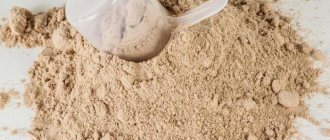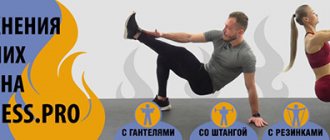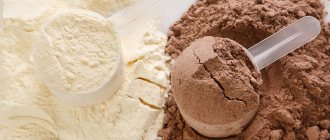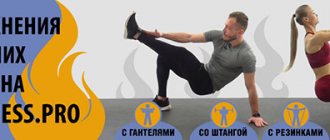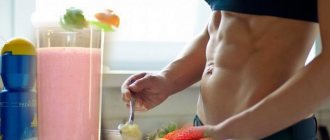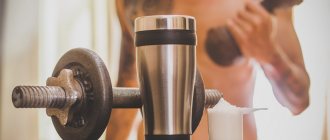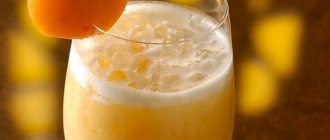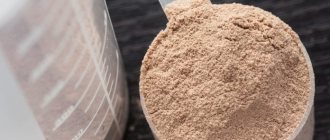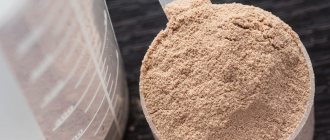Home » Mass Gain » Protein » How to Check Protein Quality
Protein
Nutritional supplements for athletes are extremely popular. This leads to the appearance of a large number of counterfeit products on the market. According to the observations of athletes, protein is most often counterfeited. A low-quality supplement is not only useless for the body, but can even cause harm. And this creates negative advertising for sports concentrates, as a result of which myths about their harmfulness appear among athletes. Therefore, you need to learn to distinguish a quality product from a fake.
How to choose quality protein?
When choosing sports nutrition, pay attention to the packaging. The label must be glued evenly and contain all the necessary information about the product - composition, expiration date, information about the manufacturer. Do not buy expired protein - it has most likely already lost its beneficial properties.
Proteins are simple proteins - organic compounds that consist of alpha amino acids linked together into a common chain by a peptide bond.
If possible, do not buy the product right away. Look at it carefully, and when you return home, find the manufacturer’s website and compare what is presented on it with what you saw in the store. Compare the labels. Very often, a fake can be recognized precisely by these inscriptions.
Pay special attention to studying the protein composition (presented on the official website) and the real one - on the product packaging. Naturally, they must match. Be sure to scan the barcode on the package. All you need is a smartphone and a special application. This will allow you to find out the country of manufacture.
Many of us, to the question “what is high-quality protein,” would most likely begin to look for the answer in our taste preferences and sensations associated with the digestion of this or that powder. In fact, the existing problems with protein quality are beyond the imagination of most of us. We bring to your attention some facts from the independent scientific laboratory ConsumerLab, which tests the quality of various types of sports nutrition (including proteins) and other supplements. You will see that the problem of the quality of sports proteins is not a myth.
Protein packaging
⇒ Integrity of the packaging - it must be without tearing off the protective film or peeling off the edges;
⇒ Availability of protective holograms and quality marks;
⇒ The advertising brand on cans or packs must be pasted exactly without spelling errors;
⇒ If you buy a product in a plastic bag, nothing is glued to it, all markings and other notes are located directly on the packaging;
⇒ When purchasing goods directly from US and UK manufacturers, pay attention to the units of measurement, whether they should be ounces (oz) or pounds (lb). For example, if you see on the packaging the brand Weider, Dymatize Nutrition, etc., kg. or gr., know that you have been deceived and the quality of the protein is called into question.
Don’t be fooled by cheap products, even the factory price for 1 kg. protein cannot be lower than $7!
How would you answer this question “what is quality protein”?
For some, a sign of quality is a well-known brand, usually foreign (Weider, Maxler, Dymatize, etc.), but in no case domestic (PureProtein, Bellakt). Some people base their perception of quality on what their taste buds say. Others may be impressed and motivated to buy by the packaging design or the sexy naked body parts of a girl with 3M followers on Instagram, who is grateful for all her achievements to a branded jar peeking out slightly from her sports bag. On the one hand, it seems that the issue of quality is purely subjective. Ultimately, producers must use the same technologies to produce protein isolates, concentrates and hydrolysates from milk. Cows are also not very different everywhere, they eat green grass and invariably give milk of the same white color. On the other hand, common sense suggests the following arguments:
- If a cow grazes close to a highway, there is a high probability that her milk will be “enriched” with heavy metals. The same goes for plant proteins: rice, soy, and peas can be grown in soil contaminated with heavy metals and pesticides. The result is low-quality protein containing contaminants.
- If, during technological processing, even the highest quality protein is heated above a certain temperature, then denaturation of the protein itself (destruction of its molecules), complete or partial, will occur. The result is a beautifully packaged product, but virtually useless for gaining weight.
- A decrease in quality can occur due to violation of storage conditions, deliberate addition of impurities that reduce the cost of the product or enhance the anabolic effect, and many other factors.
Important! The most important thing you must understand for yourself: even the highest quality protein under certain conditions can turn into NOT high quality. And it seems that the only reliable way to check quality is laboratory analysis. A sign of quality can be the repeatability of positive laboratory tests for the same type of protein.
Even the highest quality protein can turn into poor quality under certain conditions.
https://youtu.be/yv-6hm244Uw
In this article, using data from one of the American laboratories as an example, you will see the relevance of the above problems. Its purpose is not to scare, but to show the importance of a critical perception of the sports reality around you, especially when salesmen and marketers create it for you.
The most common protein problems
Based on the results of many years of laboratory analyzes, the American laboratory ConsumerLab indicates the following common problems with the quality of sports proteins and their causes: Lack of quality control of sports nutrition and protein in particular by government agencies In the United States, none of the government agencies, including the Food Control Administration Food and Drug Administration (FDA) does not quality test sports protein powders and drinks prior to sale. This actually means that you can sell anything under the guise of special sports nutrition. It is important to note that the lack of quality control on the part of serious institutions is typical not only for proteins, but in general for all types of sports nutrition, the number of which is growing every year: many enterprising companies and individuals are trying to take advantage of the easy opportunity to produce and sell the “newest » means for losing weight or building muscle mass “without extra effort”. Most problems associated with the quality of sports proteins can only be determined through laboratory testing. No US government agency tests the quality of sports protein powders or drinks before they are sold. Most likely, no country in the world does this. Most problems associated with the quality of sports proteins can only be determined through laboratory testing.
Proteins are the main material for the synthesis of new proteins. Taking protein allows both the protein intracellular structure and the muscle cell itself to become denser.
Inconsistency between the information on the label and the actual composition
Sometimes a simple analysis of the information on the label can help identify a low-quality product. For example: the value of the total calorie content of a product can be checked by summing the calorie content of individual nutrients (proteins, fats and carbohydrates), the mass fractions of which are indicated in our time on the packaging of absolutely all products (see example below). A gross discrepancy in values is an indirect sign of a brand with a low reputation that should not be trusted. A gross discrepancy in the information on the packaging is a sign of a brand that should not be trusted
How to buy sports nutrition through a virtual network
When purchasing sports nutrition, pay attention to the store where you purchase the product. Does he have the necessary documents and certificates? Read reviews on the Internet.
If you decide to order protein virtually, then it is better to purchase from an official representative in a reliable online store. Avoid illegal sellers on VKontakte or Instagram, most likely they work unofficially, so the demand from them in case of low-quality goods will be small.
Go to the “Contacts” tab on the page of the selected online store. There should be complete information about the supplier, who can be contacted if problems arise. The lack of a physical address should always alert you.
Before ordering, you can ask to send copies of documents permitting trading activities on the Internet: for example, a certificate of registration of a business entity or LLC, for example. If you refuse, it is better to turn to another virtual place of sale of sports nutrition.
https://youtu.be/_yVI7JrxsJY
Presence of harmful and prohibited substances
One of the articles published in the Journal of Nutrition and devoted to the topic of quality of special sports protein mixtures [6], among other quality problems, lists:
- lack of some active ingredients listed on the label;
- adding undesirable or harmful substances without indicating information about their presence on the packaging;
- violation of production technology.
The article provides data from laboratory tests, in which 31% of the selected sports proteins from various brands did not pass the quality test and even contained toxic substances that could cause harm to health. For example, two products were contaminated with lead, a common occurrence for herbal-based products.
Laboratory tests often reveal the presence of prohibited and toxic substances in proteins.
Important! There is only one way to avoid the risks associated with consuming low-quality proteins: purchase and use only those products whose quality has been tested in an independent laboratory.
Research method and biomaterial
For the study, venous blood is collected.
The method of analysis is immunoturbidimetry, in which the test substance is tinted by the suspension it absorbs. Then a light wave is passed through the material and the result is determined by the number of transmitted rays. The method allows you to determine the amount of protein as a percentage as accurately as possible.
What is protein S and what is it for?
Protein S is a fat-soluble protein synthesized in the liver that is dependent on plasma glycoproteins. It is a cofactor (derivative and catalyst) of protein C. It is formed in the liver, endothelial cells (inner surface of blood vessels) and megakaryocytes (bone marrow cells), from where it enters the bloodstream. It is present in the bloodstream in two forms: free and complex, associated with the C4BP protein. The protein is active only in free form, in which it performs the following functions:
- blood clot breakdown;
- participates in apoptosis - the removal of damaged cells from tissues;
- protects against inflammation during cell death.
A sufficiently high level of protein S prevents the formation of blood clots. Reduces the risk of myocardial infarction, stroke, thrombophlebitis, atherosclerosis and other diseases. It works by interacting with protein C, enhancing its properties during the proliferation of defective cells and clots, which ultimately leads to inhibition of thrombus formation. Proteins C and S depend on vitamin K, which is involved in the synthesis of these proteins. Both a lack of vitamin and its excess have a negative effect. Vitamin K is produced by intestinal bacteria and is not found in nature. Therefore, long-term dysbacteriosis can not only reduce vitamin levels, but also lead to protein deficiency.
Melamine contamination
Several years ago, one of the common quality problems with sport-specific proteins was melamine contamination.
Melamine was illegally used by some manufacturers instead of protein in the production of sports proteins, since, on the one hand, it was cheaper, and on the other hand, when testing the quality of proteins using various scientific methods assessing the nitrogen content, it made it possible to present the final product as “quality” due to its high nitrogen content.
As a result, in 2007 and 2008, numerous cases of kidney stones, kidney failure, and even deaths were reported due to the use of melamine instead of protein in pet food, milk, and infant formula. Previously, a common protein quality problem was protein contamination with melamine, which has been linked to the formation of kidney stones. However, multiple studies of specialty protein supplements conducted by an independent laboratory in 2010 found no melamine present in any product. In subsequent years, not a single case of melamine contamination was identified. Currently, testing for the presence of this substance is not carried out at all.
https://youtu.be/WfM9f1JkUlE
How protein quality is checked in the laboratory
The ConsumerLab laboratory carries out periodic random quality control of proteins of various brands. Below we present the results of one of these tests, dated April 20, 2016. This is just an example. It should be understood that any protein being included in the list of low-quality products is not permanent. After receiving negative results, the manufacturer can make adjustments to the technological process and achieve improved quality (this happens very often). Sequence of steps for quality control:
- First, the information on the labels is verified to comply with the US Food and Drug Administration's food labeling requirements.
- The package information is then checked for accuracy regarding total calories, carbohydrates, sugar, protein, fat (including saturated and trans fat), sodium and cholesterol.
- All products are tested for possible contamination with lead, mercury, arsenic, and cadmium.
- If a product is positioned as gluten-free, its presence is checked.
NOT high-quality proteins: examination results
Protein blends that did not pass quality testing (April 20, 2020):
Please note that if you take protein for several months, but no changes occur, then you are drinking a high-quality fake.
- Prolab Advanced Essential Whey Milk Chocolate (tested April 20, 2016): Contains only 31.9% of the protein stated on the bottle, which is 7.3 grams per scoop (instead of the promised 23 grams). Plus, there are 16 grams more carbs per scoop, including 3.4 extra grams of sugar.
- Dymatize Nutrition Elite Casein Smooth Vanilla (Tested April 20, 2016): Claims to be cholesterol-free on the packaging, but is actually 10.2 grams per scoop. It also claims to be sugar-free; sugar is actually found in small amounts (1.2 mg per scoop).
- Optimum Nutrition Gold Standard 100% Egg Rich Chocolate (tested April 20, 2016): Almost triple the amount of cholesterol stated on the label: 5 mg of cholesterol per scoop claimed, but actually 14.2 mg.
- Nature's Plus Spiru-Tein Vanilla (Tested April 20, 2016): Sugar content exceeds 4.2 grams, package states 8 grams. Also total carbohydrates exceeded by more than 6.7 grams. Instead of the 99 calories stated on the label, the calorie content per serving is 125 calories. The results have not changed since the last time this supplement was tested several years ago.
- Shakeology Greenberrywas (test date April 20, 2016): Contaminated with 12.7 mcg of lead per scoop (40 g). The source of contamination is difficult to determine because the product has a large number of ingredients. Although lead in such quantities may not in itself be harmful to the health of an adult, it can accumulate in the body and should therefore be avoided in excess. This supplement should not be used by children, as lead poisoning occurs at 6 mcg per day (combined from all food sources), or by pregnant women. In the United States, some state laws require a warning to be placed on the label if the lead content of a product exceeds 1 mcg of lead per daily serving. In fact, some adults can handle up to 70 mcg of lead daily, but it is still best to avoid ingesting such amounts.
- ON Gold Standard 100% Whey - Double Rich Chocolate (test date June 10, 2016) contains 36.5 mg of cholesterol in one scoop instead of the stated 6.5 mg, an increase of 21.6%, i.e. more than 30 mg.
It is better to buy protein products in specialized sports stores or pharmacies. The risk of buying a fake in these places is much lower, but it still exists. Therefore, still check the purchased supplement. - Jay Robb® Egg White Protein (tested June 10, 2016) claims to be cholesterol-free but actually contains 16.5 mg per scoop.
- Naturade Pea Protein - Vanilla (test date June 10, 2016) contains 451.4 mg of sodium per scoop - claimed to be 181.4 mg, a 67.2% increase or more than 270 mg.
- Hammer Nutrition Hammer Vegan Chocolate (tested June 10, 2016) contains 210.1 mg sodium per scoop - 140 mg claimed, 50.1% higher or 70.1 mg. In addition, cadmium contamination was detected: 4.7 mcg per scoop.
Although this amount is unlikely to cause harm to health for most adults, cadmium is a kidney toxin, a probable carcinogen, and can cause softening of bone tissue, lead to infertility, and damage the testes. The amount detected exceeds the daily limit for a person weighing less than 70 kg (according to Canadian and California standards), which requires a warning on the packaging about potential toxicity and effects on reproduction. The likely source of cadmium is cocoa powder, listed as an ingredient. Based on the results of testing cocoa powders from various manufacturers, an independent laboratory confirmed the high content of this metal in high concentrations. Thus, in 31.6 grams of the protein studied, the cadmium content was close to that found in 5 grams of cocoa used to prepare one serving of hot chocolate. Other independent laboratory studies confirm that heavy metal contamination is concentrated in products that contain plant-based ingredients.
How to test your protein yourself
Appearance
Assessing the appearance of the packaging: tightness, integrity of packaging and labels, presence of holograms. Labels must be applied evenly. If the product is packaged in a package (bag), and not in a plastic jar, then there should be no sticky labels on it - information data (text and graphic) is applied directly to the packaging.
https://youtu.be/gNL9wdjsMq4
Find out on the official website how much protein is packaged. American and English manufacturers package their products using the familiar British system of units of mass - pounds (lb) and ounces (oz). That's why you won't see kilograms (kg) or grams (g) on their packaging. Or rather, you will meet, but the translation is in kilograms, written in brackets. For example, Optimum Nutrition packages its “100% Whey Gold Standard” in a maximum weight of 10 pounds (4.545g). At the same time, German, Dutch, French, Russian, Ukrainian, Belarusian and Chinese (i.e. all other) manufacturers use the metric system of measures.
Find out what the packaging looks like. Each manufacturer pays special attention not only to the product, but also to its packaging. As for purchasing protein concentrate by weight, there cannot be any branded kilogram packages. And if a dealer packages KSB in packaging that imitates branded sports nutrition, then this is already a warning bell.
Evaluation of protein appearance. High-quality protein is a crumbly fine powder of uniform dense consistency and the same color (from white to light cream). Evaluation of taste properties. The taste characteristics of protein powder depend on the origin of the protein (whey, casein, soy, egg) and on the flavoring agents. The most popular type of protein powder is whey. We will analyze it.
Total calories
Whenever you purchase sports nutrition (protein, gainer, protein bars, etc.), do not be lazy to do a simple preliminary quality check: make sure that the total calorie content indicated on the package matches the total calorie content of the listed nutrients (proteins, fats) and carbohydrates). To do this, simply multiply the weight of each component in grams by the number of calories per gram and add up the result. The easiest way to check the quality of a protein (any sports nutrition) is to compare the calorie content of all nutrients listed on the package with the total calorie content.
Calorie content of basic nutrients: proteins, fats, carbohydrates
| Carbohydrates (excluding fiber) | 4 calories per gram |
| Squirrels | 4 calories per gram |
| Fats | 9 calories per gram |
Example: the product packaging states that 100 grams contains 25 grams of carbohydrates, 15 grams of protein, 5 grams of fat. This means that if you eat 100 grams, then from carbohydrates we will get 25 g x 4 Cal = 100 Cal, from protein - 15 g x 4 Cal = 60 Cal and from fat 5 g x 9 Cal = 45 Cal; in total - 205 calories. If this figure differs from the total calorie content indicated on the package, then the manufacturer probably “forgot” to tell about some “secret” ingredient. The reason may also be that the manufacturer uses fat and sugar substitutes, which have a lower calorie content compared to regular ones. A difference of up to 10% is considered acceptable.
How to check protein quality. 6 ways to check protein quality.
1 real whey protein can be tested simply by squeezing it in the palm of your hand. A good quality protein should make a sound similar to the crunch of snow, while flour or starch will not make a sound. Also, good protein does not dissolve so quickly in the mouth. It just sticks to your teeth and mucous membranes. Attention! Only if we talk about the currently popular KSB, then these products should be practically odorless, have a milky tint and have no sweetness;
2 The second way to check is very simple. When you have mixed the protein in your shaker, you need to shake the shaker thoroughly. After some time, the protein should completely dissolve without forming lumps, but at the same time forming a characteristic milk foam. With prolonged settling there should not be any sediment;
3 Many people have tried the popular method of testing protein by folding it in boiling water. But at the same time, for many it did not work out, since a common mistake was made. Most people simply poured boiling water over the protein, but this is not true, it needs to be cooked in it. It is known that to begin the denaturation process it is necessary to increase the temperature to 70 degrees Celsius, however, the degree of denaturation itself is not influenced by the temperature itself, but by the period of heat treatment.
As it boils, the protein should first foam, and then, after 2-3 minutes, begin to form lumps that look like grains of rice, but taste like regular cottage cheese;
4 how to check if protein contains starch or flour? For this test, we will use regular alcohol iodine, which can be purchased at any pharmacy in the city. This technique is called an iodine test. Just drop iodine on the protein, and if it starts to turn purple, then there is no doubt that you have protein mixed with flour (starch), if not just flour at all. Nowadays, maltodextrin is often used as a protein dilution, which, fortunately, also gives a staining reaction for iodine. This time the color will be dark brown. It is worth noting that such a test is most accurate when purchasing tasteless WPC, since branded proteins are usually equipped with dyes and sweeteners;
5 whey protein, like any other protein, can simply rot and decompose. All you need to do is put your powder in the sun for a few days. If you smell the characteristic smell of rot, everything is in order, there is protein there;
6, there is also another extraordinary way to test a protein for lice - the burning test. Expose your protein to fire. Thus, if it is really a protein, then the smell should be like burnt milk, but if it is starch, then it should smell like fried potatoes.
How to Test Whey Protein for Protein
- When you squeeze a powder mixture containing whey protein between your fingers, the mixture makes a sound similar to crunching snow. Flour and starch, for example, are silent when squeezed.
- The dry powder mixture sticks to the teeth and gums if it contains whey protein. Not a single type of protein dissolves in the mouth, but forms clumps that stick to the teeth.
- Pure whey protein concentrate (WPC) has a delicate milky taste, no sweetness and virtually no odor.
- After stirring (shaking) the protein in a shaker, foam always forms, and the prepared mixture is homogeneous and the protein does not precipitate even when standing.
- When boiled, whey protein concentrate produces a rising milk foam and coagulates in 1-2 minutes, forming medium-sized dense clots that look like rice and taste like chicken egg white/cottage cheese. When testing a powder mixture for the presence of protein, the mixture should be boiled rather than poured with boiling water. Although whey protein begins to denature at 62°C, the degree of denaturation is influenced more by the duration of the high-temperature treatment than by the heating temperature. Note. Boiling is a qualitative method that shows only the presence/absence of protein in the product. The amount of protein can only be judged indirectly and approximately.
- One of the well-known ways to check the presence of starch in a powdered protein mixture is the iodine test - when adding protein powder to water with a few drops of an alcohol solution of iodine dissolved in it, the cocktail turns purple if starch or flour is present in it. In the modern world, where there is accessible and cheap maltodextrin, no one will adulterate protein with flour. However, it still makes sense to carry out an iodine test for the presence of maltodextrin - maltodextrin colors the liquid an intense dark brown color (similar to the color of iodine). It is worth noting that it makes sense to carry out an iodine test only with WPC, because Carbohydrates are always added to branded protein to give it a sweet taste.
- Under the influence of ammonifying microorganisms, protein tends to decompose - rot. Moreover, only proteins can rot. Rotting is accompanied by the release of toxic products with a specific odor. If a protein shake is left in the sun (to speed up the decomposition process), it will start to stink after a few hours. Any spoiled food (and even a “spoiled” person) can have an unpleasant odor, but the smell of rotting is special and, having some experience, it is difficult to confuse it with other odors.
After opening the package, make sure that the protein contained in it is crumbly and has a uniform color. The presence of lumps indicates moisture ingress due to leaky packaging.
Some authors write that when a pure protein mixture burns (when water evaporates during a boiling test), the smell resembles burnt milk, and when a protein adulterated with carbohydrates (starch) burns, it smells like fried potatoes. Only, in order not to wash dishes with a burnt product, counterfeit and original KSB were set on fire in a spoon and on paper. As a result of the experiment, the following conclusion was made: ignition does not provide objective information about the originality or falsification of the protein. The perception of combustion products is too individual and the benefit of this testing method is very doubtful.
Next, you can choose one of the methods described below to identify a fake.
LiveInternetLiveInternet
5. When boiled, whey protein concentrate produces a rising milk foam and coagulates in 1-2 minutes, forming medium-sized dense clots that look like rice and taste like chicken egg white/cottage cheese.
— If it’s for protein, then only qualitatively (either there is protein or not; its quantity cannot be determined at home). — If it’s carbohydrates, then they should be in the gainer.
I am only “FOR”, Roman. There are factories, but their technical level (to put it mildly) is far from what it should be. For example, the Shchuchinsky MSZ (Belarus) once bought used European equipment for the production of whey protein concentrate. Yes, for Belarus (and Ukraine, and Russia, and Kazakhstan, etc.) this is some kind of progress. But the standards have changed (the train moves on) and Europe offers a truly high-quality product, albeit more expensive.
Find out on the official website how much protein is packaged. American and English manufacturers package their products using the familiar British system of units of mass - pounds (lb) and ounces (oz). That's why you won't see kilograms (kg) or grams (g) on their packaging. Or rather, you will meet, but the translation is in kilograms, written in brackets. For example, Optimum Nutrition packages its “100% Whey Gold Standard” in a maximum weight of 10 pounds (4.545g).
Rules for purchasing sports nutrition online
Thank you.
7. Under the influence of ammonifying microorganisms, protein tends to decompose - rot. Moreover, only proteins can rot. Rotting is accompanied by the release of toxic products with a specific odor. If the protein shake is left in the sun (to speed up the decomposition process). then after a few hours it will start to stink.
The presence of sediment does not indicate falsification. Natural substances may precipitate. Due to the presence of an emulsifier, branded protein should not produce sediment. (…in theory). The prepared protein shake can be stored overnight in the refrigerator (although, in the future, it is better to dissolve the protein in a smaller amount of liquid and drink it freshly prepared).
Note. Boiling is a qualitative method that shows only the presence/absence of protein in the product. The amount of protein can only be judged indirectly and approximately.
The color of the gainer depends on the dyes. The color of proteins and carbohydrates is white (or beige).
Ps: You can look at kakao powder on Amazon.
If the protein is unflavored, then it should have a milky smell. It is very easy to check the product for the presence of protein - dissolve 1 tablespoon in 100 ml of water and boil for 2 minutes.
If protein is purchased through VKontakte or Facebook, ask yourself a question: what do you know about the person (including as an individual). from whom you are going to buy. Do you know where he lives, studies, works? Does he have a photo of him on his website?
I bought a gainer. And after opening the package I realized that it was fake. I'll explain why. — Firstly, the consistency is a very light cocoa-colored powder; in fact, it smells like cocoa, although it tastes like chocolate. “Secondly, it doesn’t coagulate, but dissolves like cocoa in boiling water. — Thirdly, when mixed with milk, the result is “chocolate milk” without any dense mass. - Fourthly, the gainer or protein should crunch like snow, but it just “pours” like flour or cocoa. After that, I carefully studied the packaging and did not find any information in Russian. Although this product must have a Russian label, according to Rospotrebnadzor.
? “Verified stores” is correct. But verification takes time. And for a beginner who has decided to buy sports nutrition for the first time in his life (and has not encountered falsification), there are no trusted stores.
Vadim, why are you beating yourself up and trying to find a “trick” if the product is of high quality and beyond doubt. If everything was sold from “official sites”, then 1) the variety of goods would be minimal, and 2) prices would be several times higher. Don't worry about the expiration date either. For KSB it is usually 18 months.
? You can buy original sports nutrition on VKontakte, but I, like you, prefer an online store (“tested” personally). I bought counterfeit protein on VKontakte - I became more experienced and smarter. Once is enough, the second time for the same rake... neither nor
4. After stirring (shaking) the protein in a shaker, foam always forms, and the prepared mixture is homogeneous and the protein does not precipitate even when standing.
How to Test Whey Protein for Protein
Therefore, I urge everyone who starts working out in gyms to be careful. because The loss of money is one thing, and the loss of health, and, God forbid, life, is another thing. No one is immune from this.
I buy everything only from trusted sports nutrition stores. In VKontakte groups you can hardly buy a worthwhile gainer or protein. And stores with a long history will not spoil their reputation and sell only high-quality protein.
Still, you shouldn’t refuse to buy online. There are too many advantages to this method of shopping.
Maybe I did it wrong, but it foamed a lot and ran out of the bowl (stirring did not help), so I had to remove it from the stove and then put it back. The powder is slightly sweet and white, but after boiling it acquired the color of melted chocolate ice cream, maybe a little lighter. Despite the sound of snow and sticking there is no squirrel coming out?
=>You can check the AUTHENTICITY of beef protein in the same way as any other product: evaluate the packaging, the label... => But you can test for the PRESENCE OF PROTEIN and, moreover, its quantitative content only in laboratory conditions. The only necessary information that can be obtained at home is the formation of a broth by prolonged boiling [of powder dissolved in water].
When buying from the USA, the likelihood of counterfeiting is minimal. But there are problems with delivery.
Evaluation of protein appearance. High-quality protein is a crumbly fine powder of uniform dense consistency and the same color (from white to light cream). Evaluation of taste properties. The taste characteristics of protein powder depend on the origin of the protein (whey, casein, soy, egg) and on the flavoring agents. The most popular type of protein powder is whey.
Find out what the packaging looks like. Each manufacturer pays special attention not only to the product, but also to its packaging. As for purchasing protein concentrate by weight, there cannot be any branded kilogram packages.
Anton, weight is not the main reason for consuming or not consuming protein. The need for protein supplements is dictated by protein needs - if your protein needs (you must calculate them) are not covered by regular food, you should look at protein supplements. I won’t explain much about the choice of protein.
The result may not be due to no fault of the protein.
Part 2
Yulia, I can’t advise you anything about cocoa powder, because... incompetent in this matter. I think that sports nutrition manufacturers do not work with cocoa as a flavoring additive. Another option is to master the production of micronized cocoa powder yourself.
Dmitry, good afternoon! I would like to express my deep gratitude for your invaluable work on this site. Please help me understand the authenticity of the purchased product.
And lastly, it seems to me that any sane person who has previously had experience in using sports nutrition can distinguish a real product from a fake. It’s a shame that a considerable amount of money was spent, which cannot be returned without a trial, and that I was left without a quality product that I was going to use for its intended purpose, and not “color the water.”
Arthur, you didn’t say what type of protein you purchased: whey, soy, egg, casein. Because the signs that you expected to get are characteristic only (!) of whey protein. But “melted ice cream” after boiling is similar to soy isolate.
At first I didn’t believe my own experience. I blamed everything on “it seemed.” And then I decided to make sure with various artisanal tests, and then it became clear that they had been scammed.
Do not think that you can only buy counterfeit goods on VKontakte or from those who advertise on one of the free message boards. Even in an online store, an inexperienced buyer can purchase a fake. Look, for example, at the Altersport website. To anyone who is at least a little familiar with the protein market, everything will immediately become clear - there is no original protein in such packages. Although, even any more or less experienced Internet user who does not understand sports nutrition, but who looks at the “Contacts” page, should understand that if there is only a feedback form and there is no more information (physical address, for example). then this online “shop” is just an illusion.
Any spoiled food (and even a “spoiled” person) can have an unpleasant odor. but the smell of rotting is special and, having some experience, it is difficult to confuse it with other odors.
My situation is the following. I bought KSB for the first time through the VKontakte page. There is also no photo of the seller, as you described in other articles about scammers. Picked up by pickup from Ivanteevka in the Moscow region. Three of us came (the seller knew that three of us would come, but was not afraid to go out) and paid 650 rubles per 1 kg. Having seen during the communication that we were inexperienced in this matter, the seller, being very friendly, told us a lot of useful information about the creatine and L-carnitine that interested us. He offered to take it for free to try (in principle, this was also offered on his page).
If there is no personal experience, then there are two options: - either ask someone who has personal experience to try it, - or buy from a reliable seller.
It is worth buying by weight only from trusted sellers.
But, if you have personal experience in consuming different protein concentrates, then it is easy to distinguish whey from soy (just like from casein, albumin, etc.). Because These protein concentrates are very different in taste and solubility.
Often for such buyers the main criterion is “cheaper”. In addition, many people feel very comfortable and safe on social networks :).
The perception of combustion products is too individual and the benefit of this testing method is very doubtful.
The knowledge gained was systematized and recorded - this is how the 1st part of this article appeared.
The seller was open to communication and did not seem “cloudy.” Yesterday, after reading your articles here, I carried out all the described experiments to test the protein, except for burning on a spoon) Result: in the mouth the powder curls into lumps, when boiling the same positive reaction as described by you, the creak of “snow” is also present, in iodine the solution does not change color, but becomes slightly cloudy, there is practically no smell, the taste is very similar to typical powdered milk. Dmitry, what else could there possibly be a catch with, if there is one, since the sale is not coming from the official website, and, as far as I understand, not officially at all? How can you determine whether an expired product is being sold?
The main thing is the result from use. In most cases, people buy protein to gain weight. It may contain 90% (soy isolate) - but nothing will be absorbed.
Dmitry, I wanted to ask you where you buy sports nutrition, I would like to know a trusted supplier of high-quality sports nutrition, so as not to think later what if I bought a fake, and if I buy where you do, I would be calm)))))
Buying something online has become a natural phenomenon. And sports nutrition is no exception to this rule. Of course, there are those who, due to their excessive distrust, personal negative experience or lack of understanding of the mechanisms of online trading, are extremely cautious, wary and negative about this method of purchasing. And the peculiarity of modern people is such that high moral principles are a rarity, and many strive to cheat, deceive, and deceive their neighbor.
Ps: In a laboratory (sanitation station, for example), only the nutrient composition is determined: the amount of proteins, carbohydrates.
Using the example of online shopping, let’s look at the specific signs of good and “not so good” merchants.
Buying sports nutrition in an online store
Also, the provided documents describing the product, certificates of product analysis, and the conclusion of the state sanitary and epidemiological examination do not guarantee anything at all. What documents can people carrying out illegal trading activities have? Or rather, the documents may be real. Just to get them, it’s enough to buy the product at least once from an official supplier (for example, from the official distributor of “DMV” in Ukraine).
Buy whey protein.
Dmitry, is there any way to check what kind of protein is there? That is, for example, find out soy or whey. Simply falsification can be with replacement with a cheaper protein concentrate (which is soy).
Assessing the appearance of the packaging. tightness, integrity of packaging and labels, presence of holograms. Labels must be applied evenly. If the product is packaged in a package (bag), and not in a plastic jar, then there should be no sticky labels on it - information data (text and graphic) is applied directly to the packaging.
Part 1
How to check protein for authenticity and quality
For comparison, look at what the “contacts” page looks like in the “Stimulsport” online store and you will understand what we are talking about.
3. Pure whey protein concentrate (WPC) has a delicate milky taste. without sweetness and practically odorless.
The gainer definitely gave sediment when standing for a long time (I remembered this). KSB does not leave a sediment (as far as I remember), and I have not consumed branded protein for a long time.
I bought protein by weight. If you take it with your fingers, there is a sound like snow; in the mouth it also sticks to the roof of the mouth and teeth. But when boiling, no clots appeared. And, absolutely.
When testing a powder mixture for the presence of protein, the mixture should be boiled rather than poured with boiling water. Although whey protein begins to denature at 62°C, the degree of denaturation is more influenced by the duration of high-temperature treatment than by the heating temperature. [1]
Payment by cash on delivery (for example, when delivered by Nova Poshta) also does not provide absolutely any guarantee of the originality of the purchased sports nutrition. Cash on delivery is just an illusion. Well, what difference does it make: either they won’t send you anything at all, or they’ll send you a counterfeit?
1. By squeezing a powder mixture containing whey protein between your fingers. the mixture makes a sound. similar to the crunch of snow. Flour and starch, for example, are silent when squeezed.
The fact that the information on the packaging is not written in Russian does not mean falsification. Almost all sports nutrition in Russia, Ukraine and Belarus is not legalized (does not have domestic certificates of conformity). But a crookedly pasted label is very alarming - a self-respecting company with a name will not allow this.
YOU CAN ORDER ON THE OFFICIAL WEBSITE
I don’t understand the phrase “there is no sediment with whey, but with nat. the precipitate becomes white." Which proteins then do you consider natural and which ones do not?
I'm waiting for your answer, thanks in advance.
The modern world offers not only a variety of sports nutrition types, but also an abundance of counterfeit products. This article will tell you how to distinguish high-quality protein from a fake. Which precautionary methods should you follow in order to protect yourself as much as possible from purchasing counterfeit goods over the Internet?
6. One of the well-known ways to check the presence of starch in a powdered protein mixture is the iodine test - when adding protein powder to water with a few drops of an alcohol solution of iodine dissolved in it, the cocktail turns purple if starch or flour is present in it. In the modern world, where there is accessible and cheap maltodextrin, no one will adulterate protein with flour. However, it still makes sense to carry out an iodine test for the presence of maltodextrin - maltodextrin colors the liquid an intense dark brown color (similar to the color of iodine).
The fact that the topic of fakes has become very popular on many forums. visible to the naked eye. I understand that many forums are also created for PR of a particular product or to suppress negative reviews about fakes, for example. But I was never prepared for the fact that a seemingly popular online store, with a large assortment and a large audience, would sell counterfeit goods, and so obviously.
And if a dealer packages KSB in packaging that imitates branded sports nutrition, then this is already a warning bell.
We will analyze it.
At the same time, these German KSBs are of fairly high quality (there is no doubt about the regulatory standards of the European Union).
I don’t know how expensive the equipment is, but I’m sure that it is definitely possible to install it in at least one plant! But I’m convinced that no one thinks about people, and they make money from shit, for which they fight a lot...
When you use a product every day (and several times a day), then money is not the cornerstone.
In general, just as first aid should begin to be provided at the pre-hospital stage, assessment of the quality of a product should begin even before the moment of purchase. What is meant? When buying something, you should pay attention to who is selling it to you (both the seller and the store). You must clearly understand who is offering you goods in exchange for your money. Will you be treated by a surgeon who has dirt under his nails? Also, the seller must meet certain criteria.
If you buy sports nutrition by transferring money, for example, to a PrivatBank card, it means that you are aware that you are most likely buying illegally and fully rely on the integrity of the seller. There are honest sports nutrition dealers - look for them. But with the majority, you still need to be extremely careful.
Dmitry, please tell me, we want to set up the production of good sports nutrition, but the question arose about a protein shake with cocoa, I can’t choose the type of cocoa that will dissolve in cold milk without sediment. I have already tried species from our Russian to German species, but to no avail. In combination with the serum, there is no sediment, but with nat. protein forms a precipitate, there is no desire to add chemicals, maybe you can suggest the type of cocoa?.
Don’t forget that you still need to pay for the hall and all the associated costs that come with it. And gaining a couple of kilos of muscle turns into a rather large sum...
To be sure, before purchasing, you can ask to be sent copies of the certificate of registration of a business entity (or limited liability company) with the right to retail trade via the Internet. If there are such documents, then no one will hide them from you. And if you are denied your legitimate (and most likely last) request, then it is better to find another source for purchasing the goods you need. But it also happens that you can buy a counterfeit even from a legal entity (LLC). For example, before you buy Shchuchin KSB-UF-80 at a price of 95 UAH/kg. find out the selling price at the Shchuchinsky MSZ (at the same time, find out whether this KSB is exported to your country and your city).
And even if the product is expired by several months, this will not affect its properties in any way, because the moisture and fat content in the powder is insignificant (approx. 5%), which means oxidation processes are minimal.
Evgeniy, the main criterion when determining the authenticity of a gainer is your own experience (the rest of the analysis is secondary when analyzing a multi-component product).
At the same time, German, Dutch, French, Russian, Ukrainian, Belarusian and Chinese (i.e. all other) manufacturers use the metric system of measures.
The absence of a label in your native language is not yet an indicator of counterfeit. This is rather an indicator of the smuggling of the product. For example, some CSCs that are imported into Ukraine (and, moreover, in considerable volumes) do not have domestic certification.
Well, add lecithin as a [natural] emulsifier.
In general, any information confirming that this is a real person and not a fake page to deceive the gullible and inexperienced.
Evgeny, check the gainer for the presence of what (what nutrient) are you interested in?
As for me, the only thing that a gainer consumer should be interested in is whether the amount (%) of proteins corresponds to what is stated on the package and the quality of carbohydrates (their glycemic index). But the amount of protein can only be determined in laboratory conditions (and even then, not in all).
Purchasing sports nutrition through social networks
In one of its articles, the Benefit Molecule talked about an experiment with the purchase of protein. The protein purchased was, as it turned out, counterfeit. But the experience gained was, by all means, positive.
If high-quality protein concentrates could not be purchased at all, then one might be upset about this. But there is high-quality KSB [from Europe] in Ukraine (although in most cases illegally) and you can buy it.
It is impossible to reliably distinguish whey protein from soy protein visually or by any other physical properties.
It is worth noting that it makes sense to carry out an iodine test only with WPC, because Carbohydrates are always added to branded protein to give it a sweet taste.
2. Dry powder mixture sticks to teeth and gums if it contains whey protein. Not a single type of protein dissolves in the mouth, but forms clumps that stick to the teeth.
What is the WRONG way to check for protein?
Molecule of Life for free. Benefit and beauty.
Well, of course you can buy anything you want today! But why overpay for costs, say, from Holland, if you could buy your own nearby. Moreover, the one who is engaged in it is necessary for him like water and in considerable portions. And with the prices for protein, even the one in bulk, you won’t really get enough.
Bodybuilding is an expensive sport. For example, for February I have: - 300 UAH - KSB - 30 UAH - maltodextrin - 50 UAH - BCAA - 30 UAH - vitamins - 120 UAH - gym membership + some UAH creatine Total: 530 UAH (and this is taking into account the fact that I get sports nutrition at low prices).
Some authors write that when a pure protein mixture burns (when water evaporates during a boiling test), the smell resembles burnt milk, and when a protein adulterated with carbohydrates (starch) burns, it smells like fried potatoes. "Molecule of Benefit" conducted a similar experiment. Only, in order not to wash dishes with burnt product, counterfeit and original KSB were set on fire in a spoon and on paper. As a result of the experiment, the following conclusion was made: ignition does not provide objective information about the originality or falsification of the protein.
And buying in bulk means buying a cat in a poke; they can send anything. Somewhere here it was indicated - Shchuchinsky KSB for 70 UAH - I was offered to buy, but after reading, I found out that this was an expired batch (the shelf life there is only 6 months). This one needs to be thrown away. Although all tests will show everything is OK
Hello. I bought whey isolate from Syntrax nectar. There is not a word in Russian on the packaging, the label is stuck on a little unevenly, the smell smells like powdered milk. Tell me how to check the isolate?
I mixed the cocktail, but couldn’t drink it completely. left it in the refrigerator. in the morning in the shaker ((and it is transparent) a significant sedimentary layer was discovered. The product is not real? And another question - is it safe to drink after a day in the refrigerator.
How to identify a low quality product?
Today there are enough methods for identifying low-quality protein. In this article we will reveal the secrets of some of them:
The first thing to do is check the quality of the additive for taste. It's easy to do. Scoop up some protein and put the powder in your mouth. The presence of a large amount of protein can be immediately determined by the presence of gluten. As a result, the protein will stick strongly to your gums, teeth and tongue. If this is exactly what happens, then you have quality protein in your hands. If there is no protein in the powder, the latter will simply open up and turn into an ordinary “mush.” There will be no stickiness. To identify a fake, warm water (in this case, not boiling water) is enough. The optimal temperature is about 60-65 degrees Celsius. Take a little powder into a spoon (about 10-15 grams) and put it in a glass of water (80-100 ml is enough). High-quality protein can be identified by its characteristic swelling. Within a few minutes there will be a homogeneous “curd” mass in the glass. If you get a low-quality product, then naturally there will be no such effect. An excess of chalk or flour in the composition will lead to cloudiness of the water and the appearance of sediment.
Pour some protein powder into the bottom of the cup and begin pouring boiling water into the container (carefully and gradually). Observe the behavior of the protein. A high-quality, high-protein product will certainly curdle. Take it into your mouth and try to chew it - it takes on a “rubber” shape. If, when boiling water is added, the powder dissolves, and even with the formation of foam, then you have become the owner of a fake, which contains only preservatives, chalk, flour and other elements. There is an opinion that simply adding boiling water is not always effective and it is necessary to boil the protein mixture. Try both ways. If during the first check you suspect the quality of the product, pour the composition into a saucepan and bring it to a boil. One of the simplest methods is to test the protein for crunch. Take some powder between your fingers, squeeze and try rubbing. High-quality protein will crunch (like dry snow in frosty weather). If you just have starch and flour in your hands, then there will be no sounds.
While preparing a protein shake using a shaker, observe the “behavior” of the composition. If foam has formed, the composition has a uniform consistency and there is no sediment, then with a high probability we can talk about the high quality of the product.
If you have iodine on hand, you can also use it to distinguish a quality product. If there is starch or flour in the protein, adding iodine to the cocktail will cause the composition to turn purple. Of course, few manufacturers will take this risk - most often maltodextrin is added. But even in this case, iodine can be an excellent help. The composition after the experiment will be dark brown. The last verification method is the longest. Prepare a protein shake and expose it to sunlight. High-quality protein tends to decompose, creating a strong, literally “cadaverous” stench. It is impossible to confuse it with anything. A similar reaction should occur within a few hours after the start of the experiment.
molekula-polzy.ru/protein-proverka/ proteinfo.ru/baza-znanij/protein/poddelka/
https://youtu.be/a6MWzVNx738
Boiling water test
The easiest way to check the authenticity of a protein is to boil it. To do this, pour water into a saucepan, bring to a boil and add the protein. Continue cooking for 2-5 minutes. After this, strain the mixture through a sieve.
- If during cooking the protein begins to coagulate like cottage cheese - bingo, you have a high-quality mixture. But don’t rush to draw conclusions, but check it after pumping: it should taste like cottage cheese or egg white, and be white in consistency and not stick to your hands.
- If the mixture turns out to be very sticky and translucent , you have starch. It has nothing to do with protein and will help you gain more fat instead of muscle.
- Did the mixture turn out white and sticky , but does it look like rice porridge? It will make excellent whites, since in this case you are dealing with flour.
- If the mixture dissolves in water and after decanting there is nothing left , you have a protein without protein. We can only guess what was in the package instead, but it’s better not to take risks and take such a mixture.
The essence of the experiment is explained simply: under the influence of temperature, the process of protein denaturation occurs due to a change in the configuration of protein molecules. This process can be clearly seen not only by pouring protein powder with milk, but also, for example, when frying scrambled eggs. However, denatured protein can easily be confused with clumped flour or starch. That is why we recommend checking the resulting mixture according to a number of parameters.
Unfortunately, this test method does not work for protein hydrolyzate and casein. The first one has already been subjected to heat treatment and curled before entering the package, but casein does not tend to curl when boiled.
